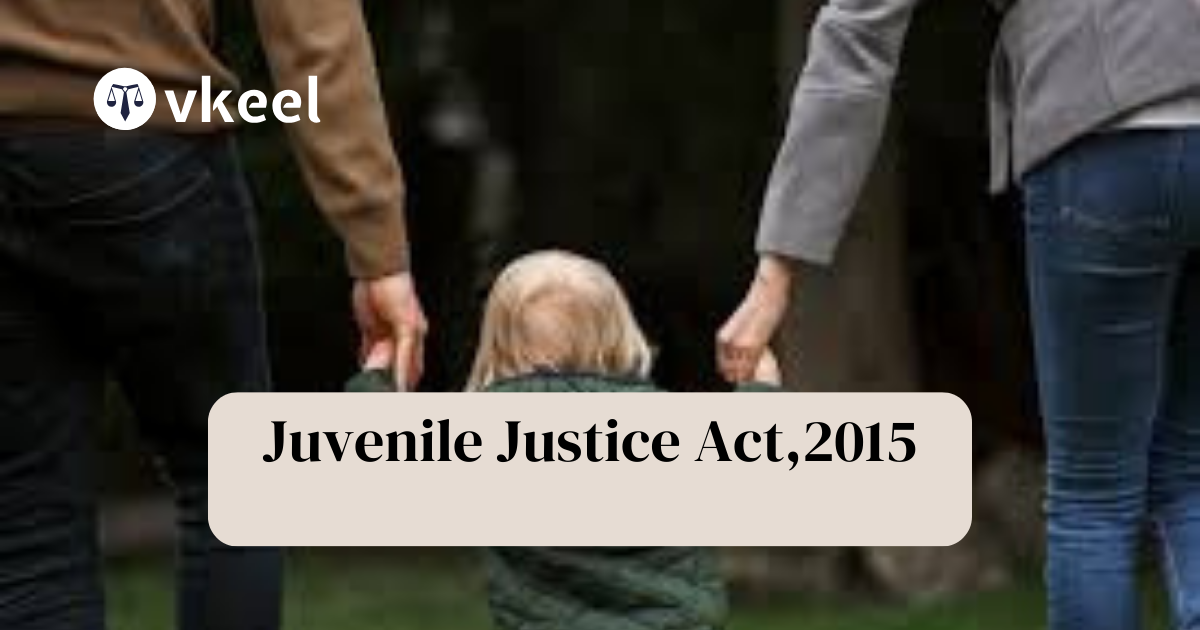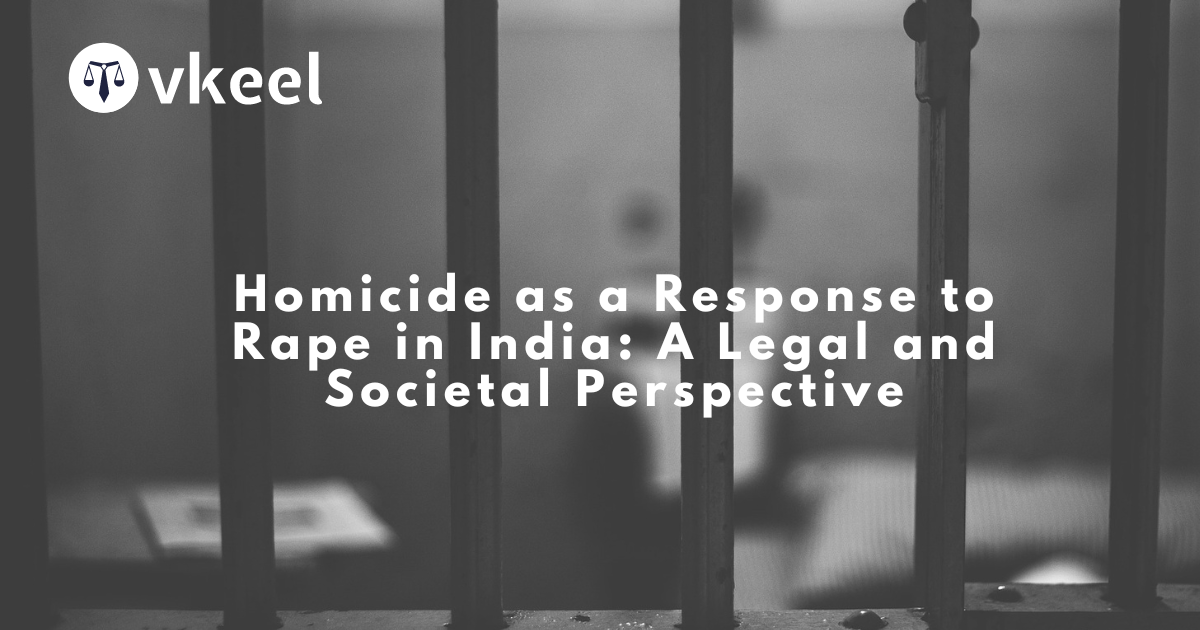Juvenile Justice Act,2015
By Himanshu Kumar
Table of Contents
Introduction
The Juvenile Justice (Care and Protection of Children) Act, 2015, often referred to as the JJ Act, is a comprehensive legal framework in India that seeks to protect the rights of children and ensure their welfare. It replaced the Juvenile Justice (Care and Protection of Children) Act, 2000, bringing significant changes to the legal treatment of juveniles, especially concerning their involvement in criminal activities and their need for care and protection.
The primary reason for enacting the Juvenile Justice (Care and Protection of Children) Act, 2015, was to create a more comprehensive and child-centric legal framework that aligns with international standards and addresses the shortcomings of previous legislation. The earlier Juvenile Justice Act of 2000 faced criticism for its inadequate provisions regarding the rehabilitation and reintegration of juvenile offenders and for not fully protecting the rights of children in need of care and protection. The 2015 Act was introduced to ensure that juveniles are treated differently from adults in the legal system, reflecting their unique needs and vulnerabilities, and to provide mechanisms for their rehabilitation and social reintegration.
Additionally, the 2015 Act aimed to address public concerns about juvenile involvement in serious crimes by introducing provisions that allow for the trial of juveniles aged 16 to 18 as adults for heinous offenses, based on an assessment by the Juvenile Justice Board. This move sought to balance the need for justice for victims with the principles of juvenile justice that focus on reform and rehabilitation. The Act also sought to streamline and improve the adoption process, ensuring that children without parental care find loving families more efficiently. Overall, the JJ Act, 2015, was crafted to offer a holistic approach to juvenile justice, focusing on protection, rehabilitation, and reintegration while ensuring that the legal system is fair and just for all children.
Historical Background and Evolution
The Juvenile Justice system in India has evolved over the years, reflecting the changing perspectives on child rights and the need for a specialized approach to juvenile offenders. The first significant legislation was the Juvenile Justice Act, 1986, which aimed at providing care, protection, treatment, and rehabilitation of neglected or delinquent juveniles. However, it was soon realized that the 1986 Act needed to be more comprehensive in addressing the complexities of juvenile justice.
The 2000 Act was introduced to align with the United Nations Convention on the Rights of the Child (UNCRC), to which India is a signatory. This act brought in a more child-centric approach but still faced criticism for its inadequate provisions regarding the rehabilitation and reintegration of juveniles into society.
The Juvenile Justice (Care and Protection of Children) Act, 2015
The JJ Act, 2015, was introduced to address the shortcomings of the previous legislation and incorporate a more nuanced and comprehensive approach to juvenile justice. Key features of the 2015 Act include:
- Definition and Age of Juveniles: The Act defines a “juvenile” or “child” as a person who has not completed 18 years of age. However, it introduced a controversial provision where juveniles aged 16 to 18 years involved in heinous offenses can be tried as adults, based on the assessment of the Juvenile Justice Board (JJB).
- Juvenile Justice Board (JJB): The JJB is a crucial body under the Act, comprising a Metropolitan Magistrate or a Judicial Magistrate and two social workers, one of whom should be a woman. The JJB is responsible for adjudicating cases involving juveniles in conflict with the law.
- Child Welfare Committee (CWC): The Act mandates the establishment of CWCs in every district to address the needs of children in need of care and protection. The CWC is a quasi-judicial body responsible for ensuring the care, protection, treatment, development, and rehabilitation of children in need of care and protection.
- Rehabilitation and Social Reintegration: The Act emphasizes rehabilitation and social reintegration of juveniles through various institutions and services, including Special Homes, Observation Homes, and After-care Organizations.
- Adoption: The Act provides detailed provisions for the adoption of children, including the establishment of the Central Adoption Resource Authority (CARA) as the nodal body for adoption. It simplifies the adoption process and ensures the best interests of the child are prioritized.
Significant Amendments and Provisions
The JJ Act, 2015, has undergone several amendments to address emerging challenges and improve its effectiveness:
The Juvenile Justice (Care and Protection of Children) Amendment Act, 2021: This amendment aimed at streamlining the adoption process and strengthening the implementation mechanisms. Key changes included:
- Redefining the term “child in need of care and protection” to include children who are found working in contravention of labor laws or living in child care institutions with insufficient facilities.
- Empowering District Magistrates to monitor the functioning of agencies responsible for implementing the Act.
- Ensuring a more robust and transparent adoption process by involving District Magistrates in adoption orders and ensuring proper documentation.
Heinous Offenses and Adult Trial: One of the most debated provisions is the trial of juveniles aged 16 to 18 as adults for heinous offenses. This was introduced following public outcry over the involvement of juveniles in serious crimes, such as the 2012 Delhi gang rape case. The Supreme Court upheld this provision, emphasizing that it provides a balance between protecting the rights of juveniles and ensuring justice for victims of serious crimes.
Case Laws and Judicial Interpretations
Several landmark case laws have shaped the interpretation and implementation of the JJ Act:
- Pratap Singh vs State of Jharkhand (2005): In this case, the Supreme Court held that the date of commission of the offense should be considered for determining whether the accused is a juvenile, not the date when the court takes cognizance of the offense. This interpretation ensured that juveniles are tried under the juvenile justice system even if they attain adulthood during the trial process.
- Salil Bali vs Union of India (2013): This case challenged the constitutionality of treating juveniles under 18 years of age differently from adults in the context of serious crimes. The Supreme Court upheld the existing provisions, emphasizing the need for a separate juvenile justice system to protect and rehabilitate young offenders.
- Dr. Subramanian Swamy vs Raju (2014): This case highlighted the issue of trying juveniles as adults for heinous crimes. The Supreme Court noted that while juveniles should be protected and rehabilitated, there should be provisions to try older juveniles involved in heinous crimes as adults. This observation laid the groundwork for the 2015 Act’s provision allowing juveniles aged 16 to 18 to be tried as adults in specific cases.
Challenges and Criticisms
Despite its comprehensive nature, the JJ Act, 2015, faces several challenges and criticisms:
- Trial as Adults: The provision allowing juveniles aged 16 to 18 to be tried as adults for heinous crimes has been criticized for potentially violating child rights and the principles of juvenile justice. Critics argue that it undermines the rehabilitative approach and could lead to harsher punishments that do not necessarily deter juvenile delinquency.
- Implementation Gaps: Effective implementation of the Act remains a significant challenge. Issues such as inadequate infrastructure, lack of trained personnel, and insufficient monitoring mechanisms hinder the proper functioning of JJBs, CWCs, and other institutions.
- Rehabilitation and Reintegration: While the Act emphasizes rehabilitation and social reintegration, the actual availability and quality of rehabilitation services are often inadequate. Many juveniles do not receive the necessary support to reintegrate into society successfully.
- Awareness and Training: There is a need for greater awareness and training among stakeholders, including law enforcement agencies, judicial officers, and social workers, to ensure the proper implementation of the Act. Lack of understanding of the provisions and principles of juvenile justice often leads to improper handling of cases.
The Way Forward
To address the challenges and ensure the effective implementation of the JJ Act, several measures can be undertaken:
- Strengthening Infrastructure and Resources: Adequate infrastructure and resources should be allocated to JJBs, CWCs, and other institutions to ensure their proper functioning. This includes building more observation homes, special homes, and after-care organizations with the necessary facilities and trained personnel.
- Capacity Building and Training: Regular training programs should be conducted for all stakeholders involved in the juvenile justice system to enhance their understanding of the Act’s provisions and principles. This will ensure better handling of cases and effective implementation of the law.
- Monitoring and Evaluation: Robust monitoring and evaluation mechanisms should be established to assess the implementation of the Act and identify gaps. Regular audits and inspections of institutions can help ensure compliance with the provisions and improve service delivery.
- Public Awareness and Sensitization: Public awareness campaigns should be conducted to educate communities about the rights of children and the provisions of the JJ Act. Sensitizing the public to the needs and rights of juveniles can help in creating a more supportive environment for their rehabilitation and reintegration.
- Strengthening Rehabilitation Programs: Comprehensive rehabilitation programs should be developed to address the specific needs of juveniles, including education, vocational training, mental health support, and counseling. Collaboration with NGOs and community organizations can enhance the effectiveness of these programs.
Conclusion
The Juvenile Justice (Care and Protection of Children) Act, 2015, represents a significant step forward in protecting the rights of children and ensuring their welfare in India. While it has introduced important provisions and amendments to address the complexities of juvenile justice, effective implementation remains crucial. Addressing the challenges and ensuring a child-centric approach will require concerted efforts from all stakeholders, including the government, judiciary, law enforcement agencies, and civil society. With continued focus on rehabilitation, reintegration, and protection of child rights, the JJ Act can pave the way for a more just and equitable society for children in India.
Disclaimer:
The information provided in the article is for general informational purposes only, and is not intended to constitute legal advice or to be relied upon as a substitute for legal advice. Furthermore, any information contained in the article is not guaranteed to be current, complete or accurate. If you require legal advice or representation, you should contact an attorney or law firm directly. We are not responsible for any damages resulting from any reliance on the content of this website.







